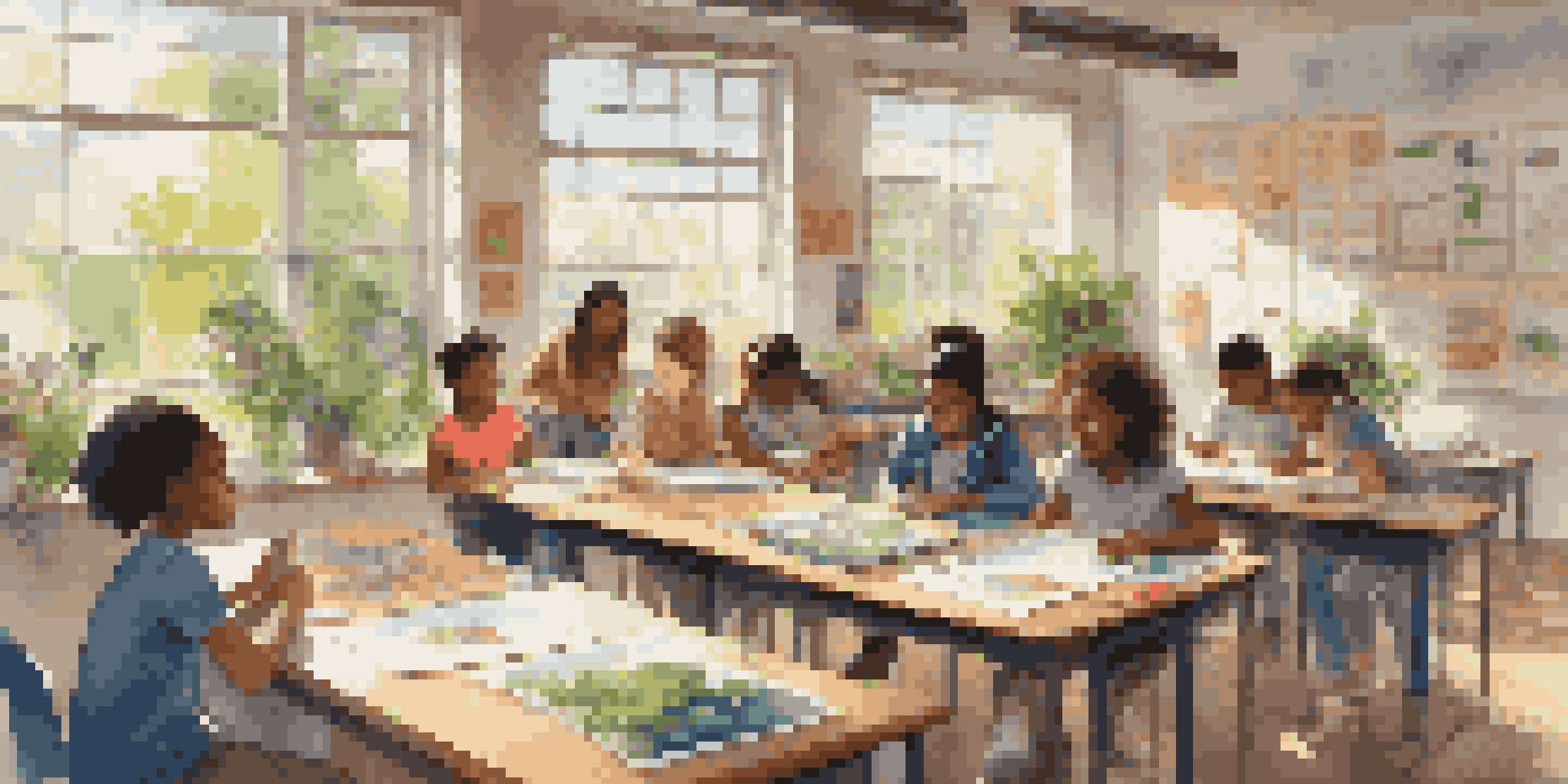Peer Learning and Its Contribution to Environmental Education

Understanding Peer Learning in Education
Peer learning refers to the process where students learn from one another, often through collaboration and shared experiences. This method encourages active participation and helps to create a more inclusive learning environment. For instance, when students work together on environmental projects, they can exchange ideas and insights that may not emerge in traditional teaching settings.
The Importance of Environmental Education
Environmental education is crucial as it nurtures awareness and understanding of ecological issues. By incorporating topics like climate change and sustainability into the curriculum, students can develop a sense of responsibility towards the planet. This foundational knowledge empowers them to make informed choices as they grow, shaping a more sustainable future.
Peer Learning Enhances Engagement
Students learn more effectively through collaboration and shared experiences, fostering a deeper understanding of environmental issues.
How Peer Learning Enhances Environmental Education
Peer learning facilitates deeper understanding by allowing students to discuss and debate environmental concepts among themselves. For example, when working in groups to analyze local pollution issues, students can challenge each other's perspectives, leading to a richer comprehension of the topic. This interactive approach not only reinforces their knowledge but also fosters critical thinking skills.
Building Collaboration Through Peer Learning
Collaboration is at the heart of effective peer learning. Students who engage in collaborative tasks, like community clean-up initiatives, build teamwork skills while also addressing environmental challenges. This shared experience helps them appreciate diverse viewpoints and encourages collective problem-solving, making the learning process more impactful.
Collaboration Builds Community
Engaging in peer learning cultivates a sense of community, which encourages students to actively participate in environmental advocacy.
Fostering a Sense of Community
Peer learning creates a sense of community among students, which is vital for emotional engagement in environmental issues. When students feel supported by their peers, they are more likely to share their thoughts and concerns about ecological challenges. This communal bond can motivate them to take action, whether through projects or advocacy, reinforcing their commitment to the environment.
Challenges in Implementing Peer Learning
While peer learning has many benefits, it also comes with challenges, such as unequal participation among students. Some individuals may dominate discussions, which can hinder the learning experience for others. Educators need to implement strategies to ensure that everyone has a chance to contribute, creating a balanced and inclusive environment.
Challenges of Peer Learning
While beneficial, peer learning can face challenges like unequal participation, requiring educators to implement strategies for inclusivity.
Real-life Examples of Peer Learning in Action
Many schools have successfully integrated peer learning into their environmental education programs. For instance, students might collaborate on a recycling project, where they research best practices together and present their findings. Such hands-on experiences not only enhance their understanding but also empower them to apply their knowledge in real-world contexts.
The Future of Peer Learning in Environmental Education
Looking ahead, integrating peer learning into environmental education can revolutionize how we teach future generations. As technology continues to evolve, online platforms can facilitate peer interactions beyond the classroom. By harnessing these tools, educators can create a dynamic learning landscape where students are active participants in their environmental education journey.